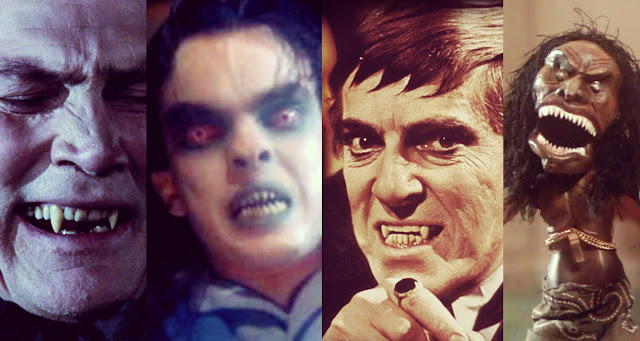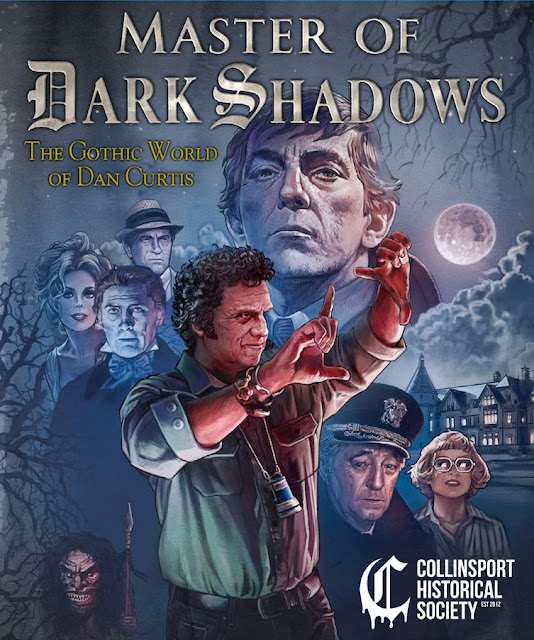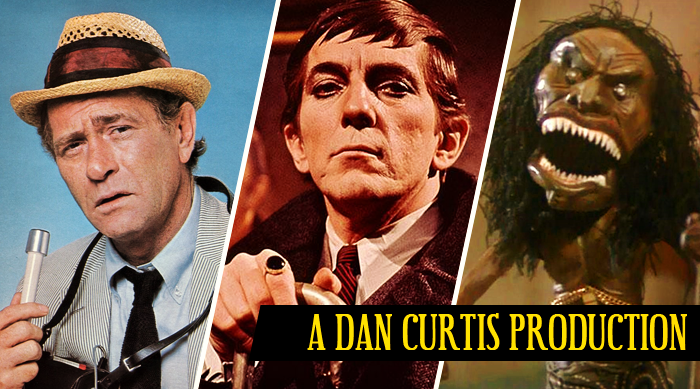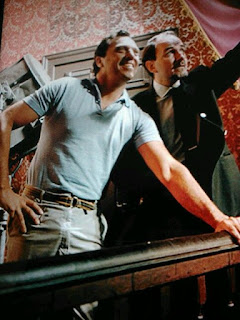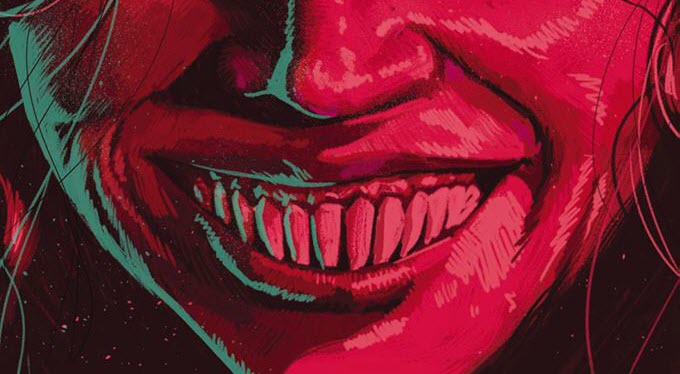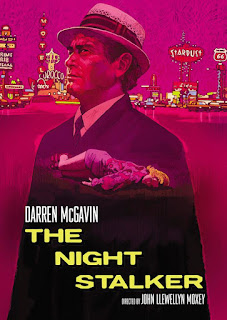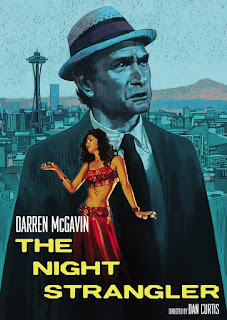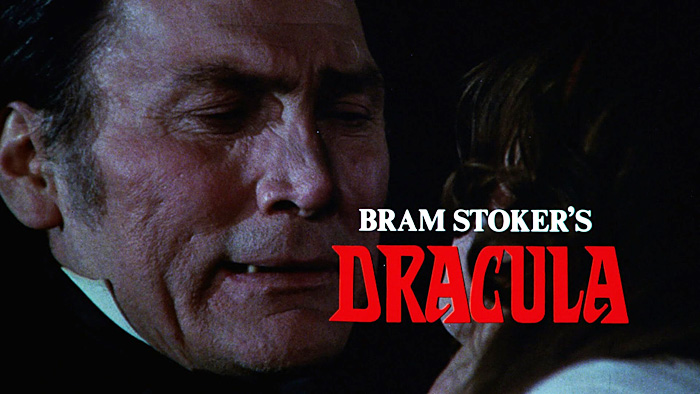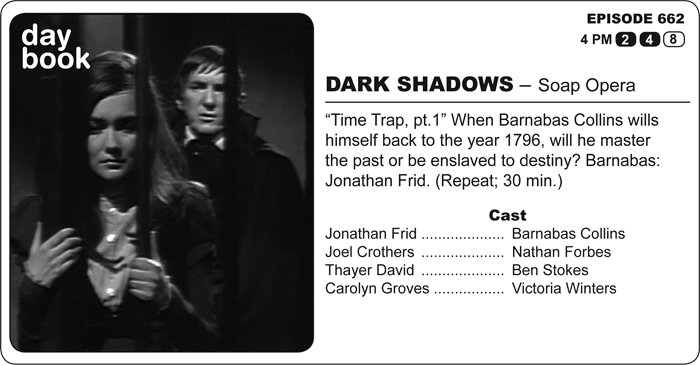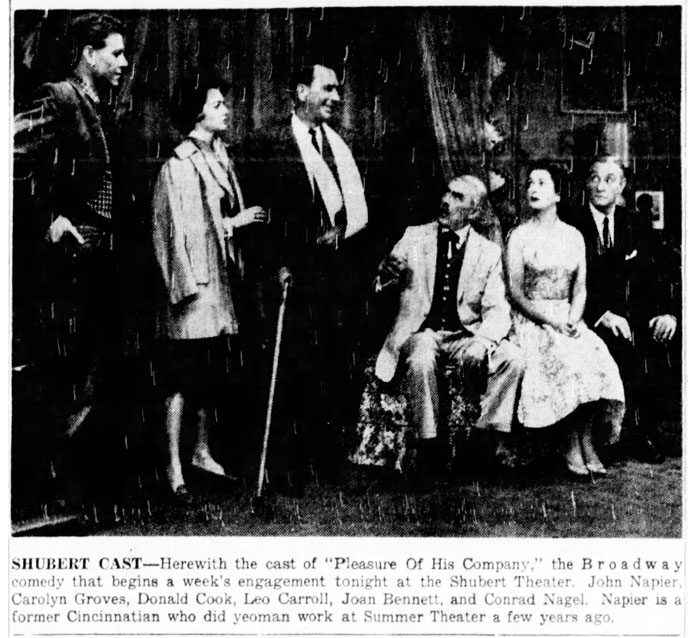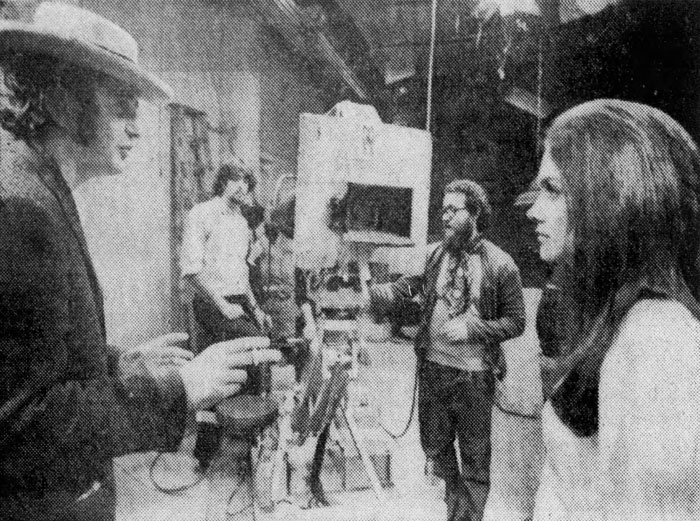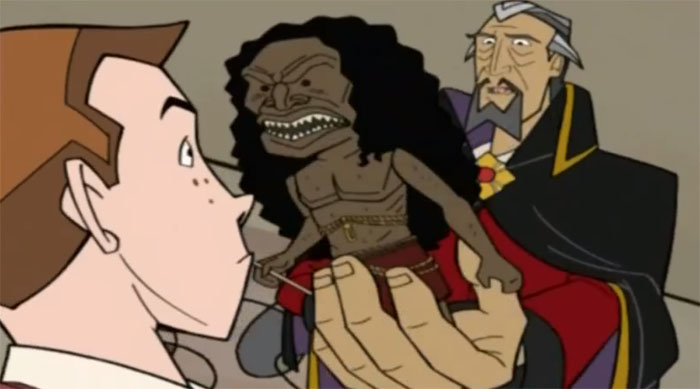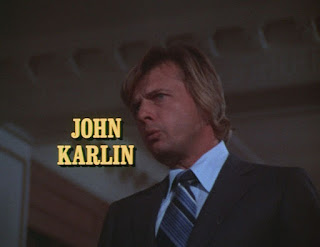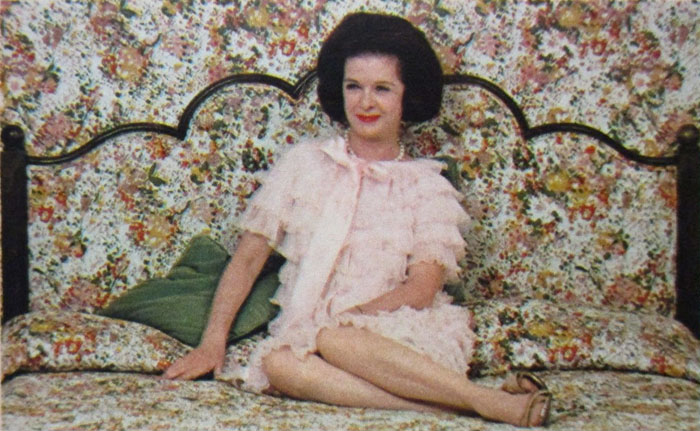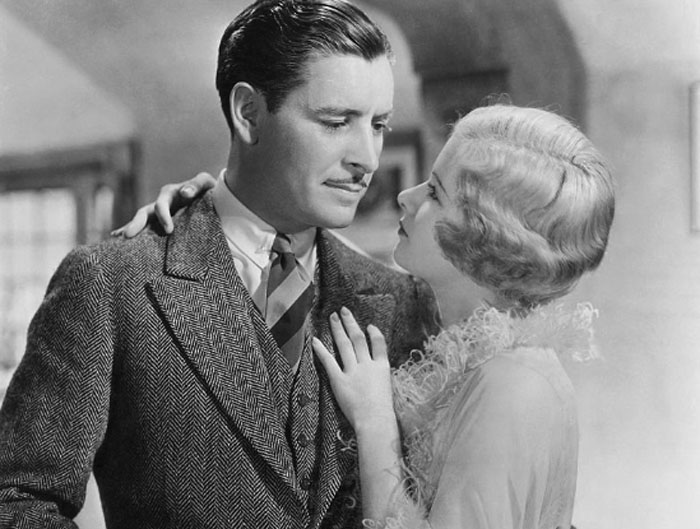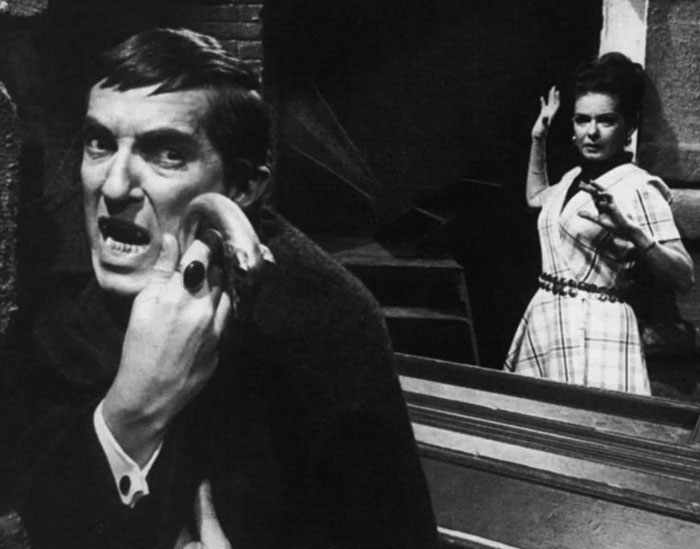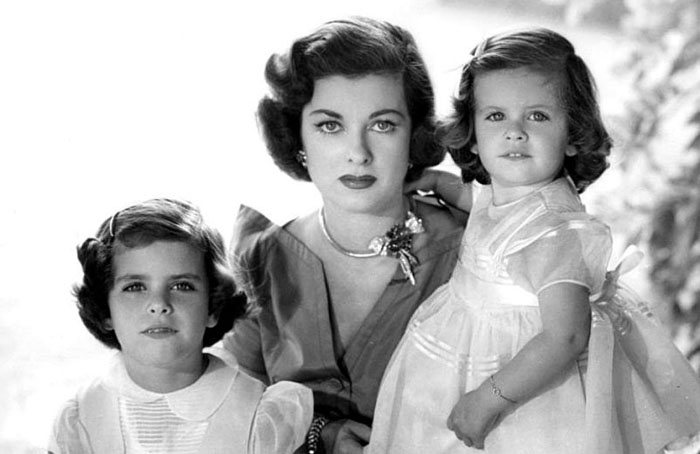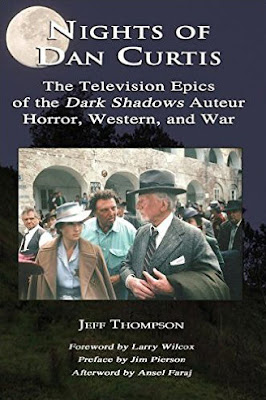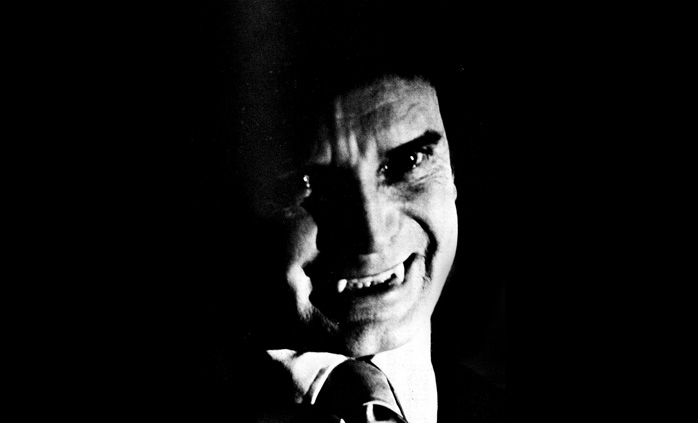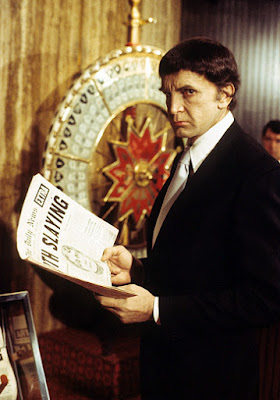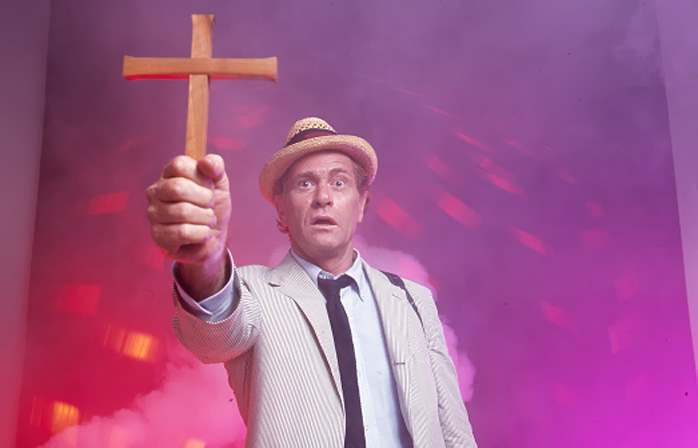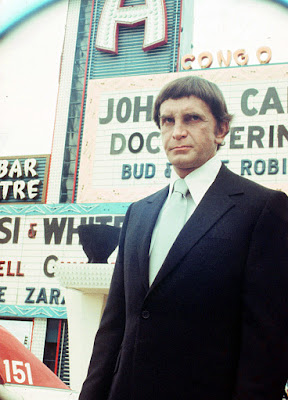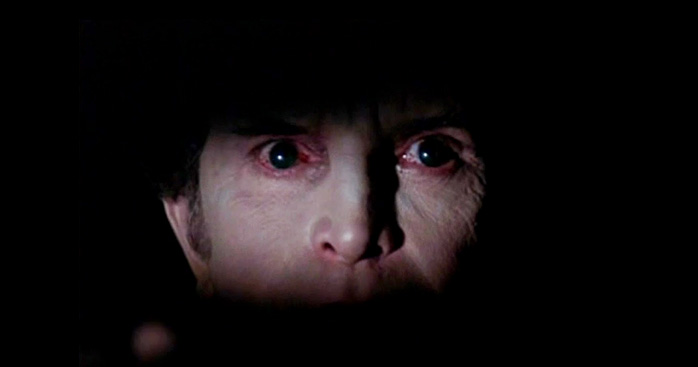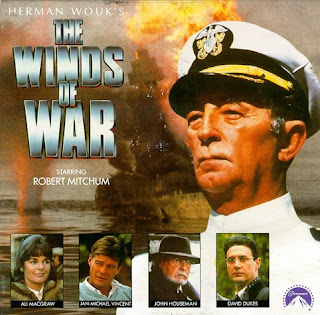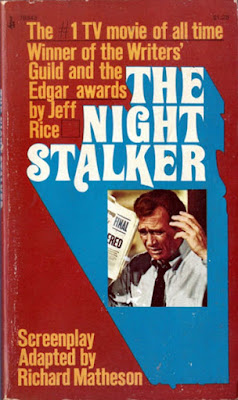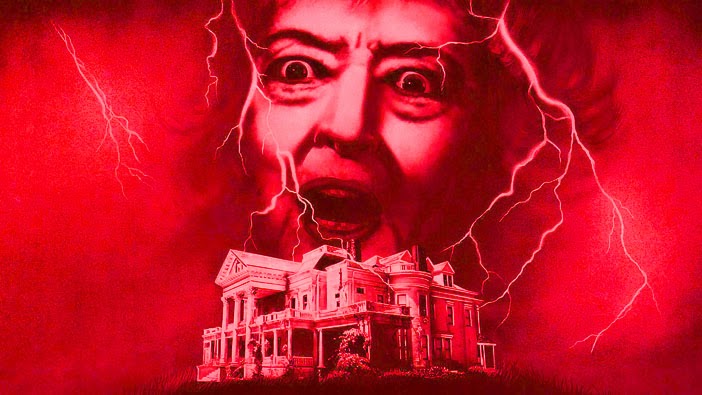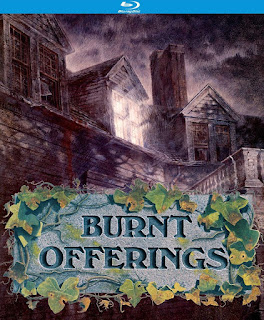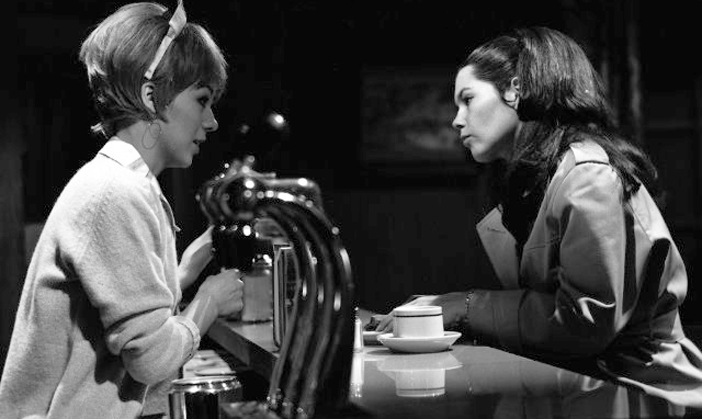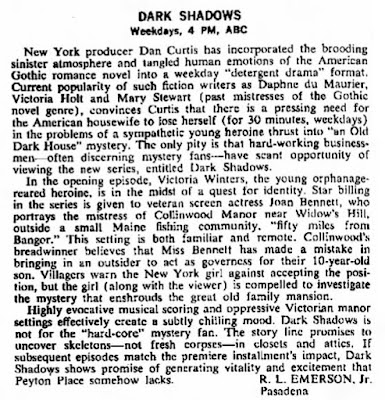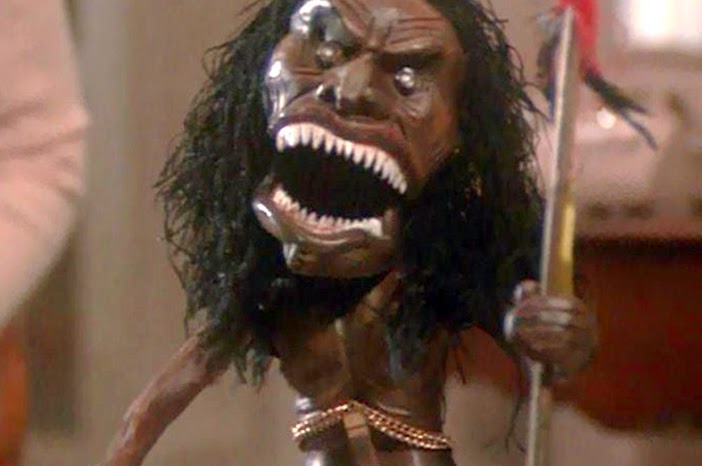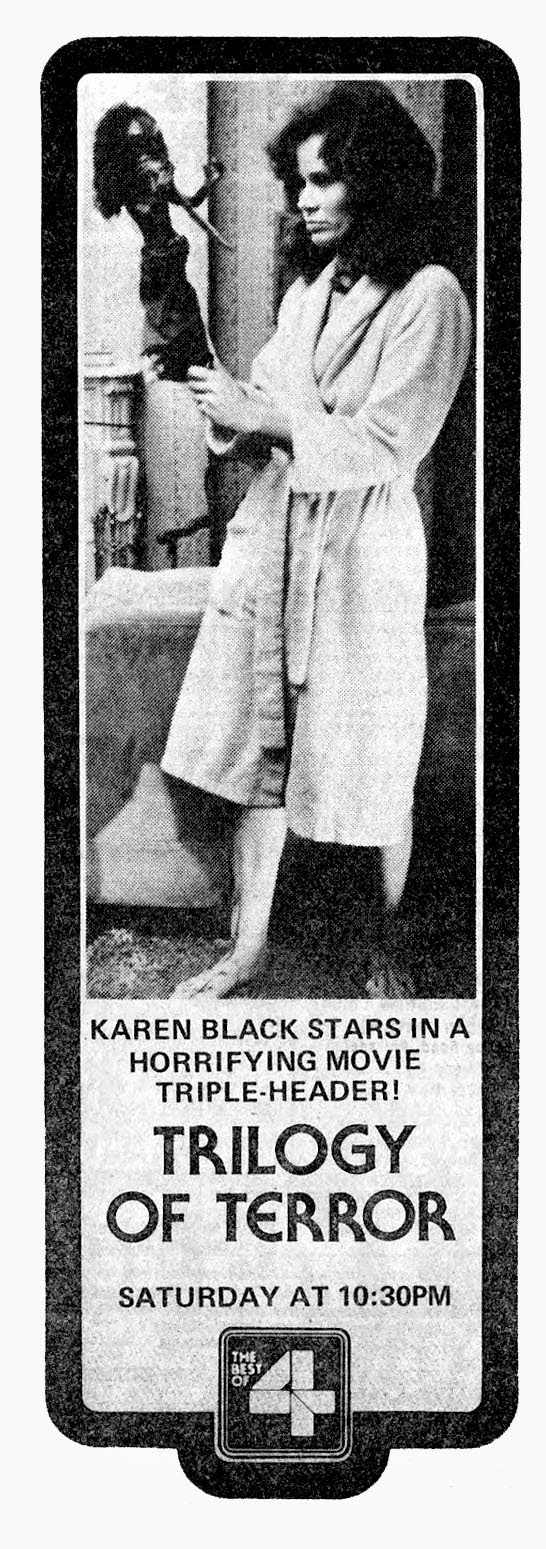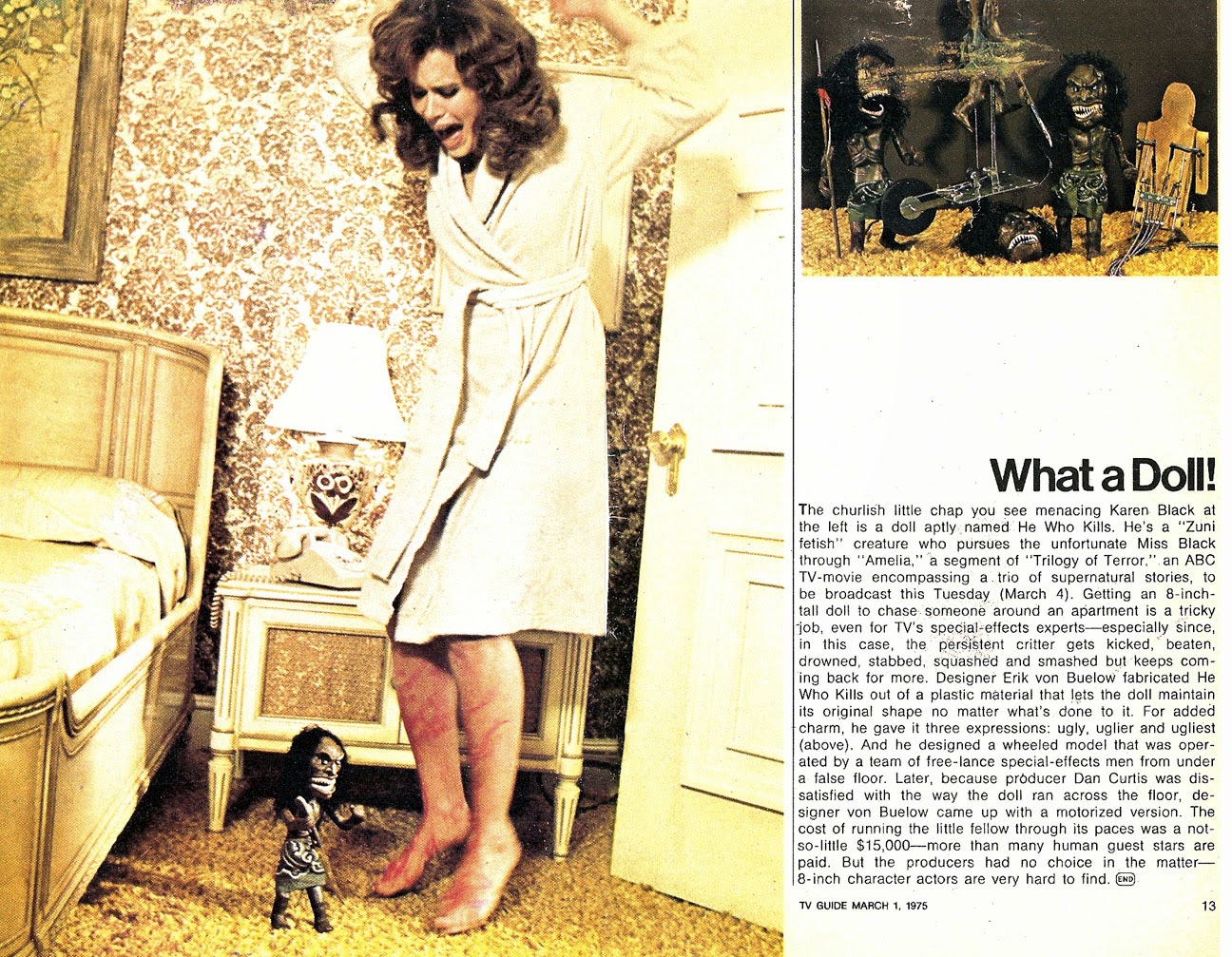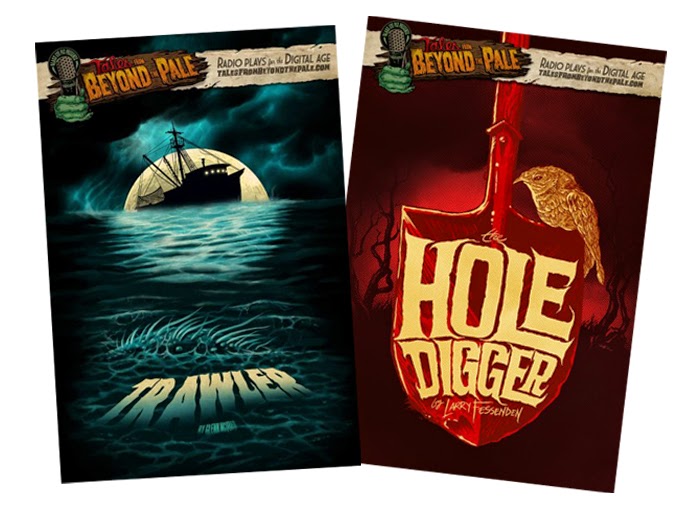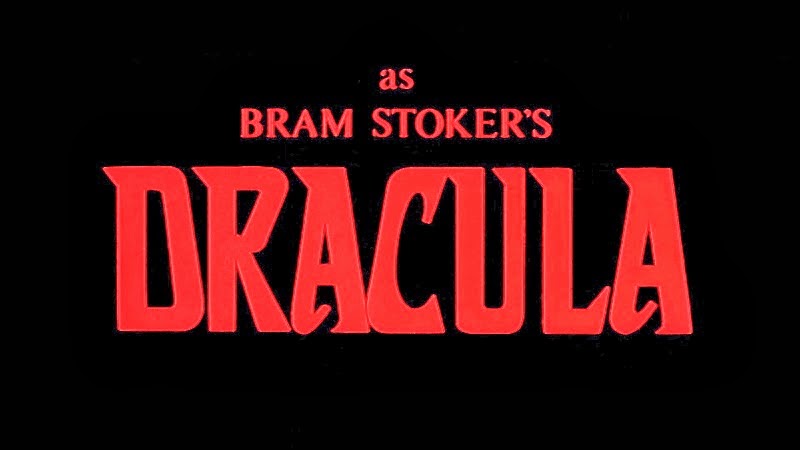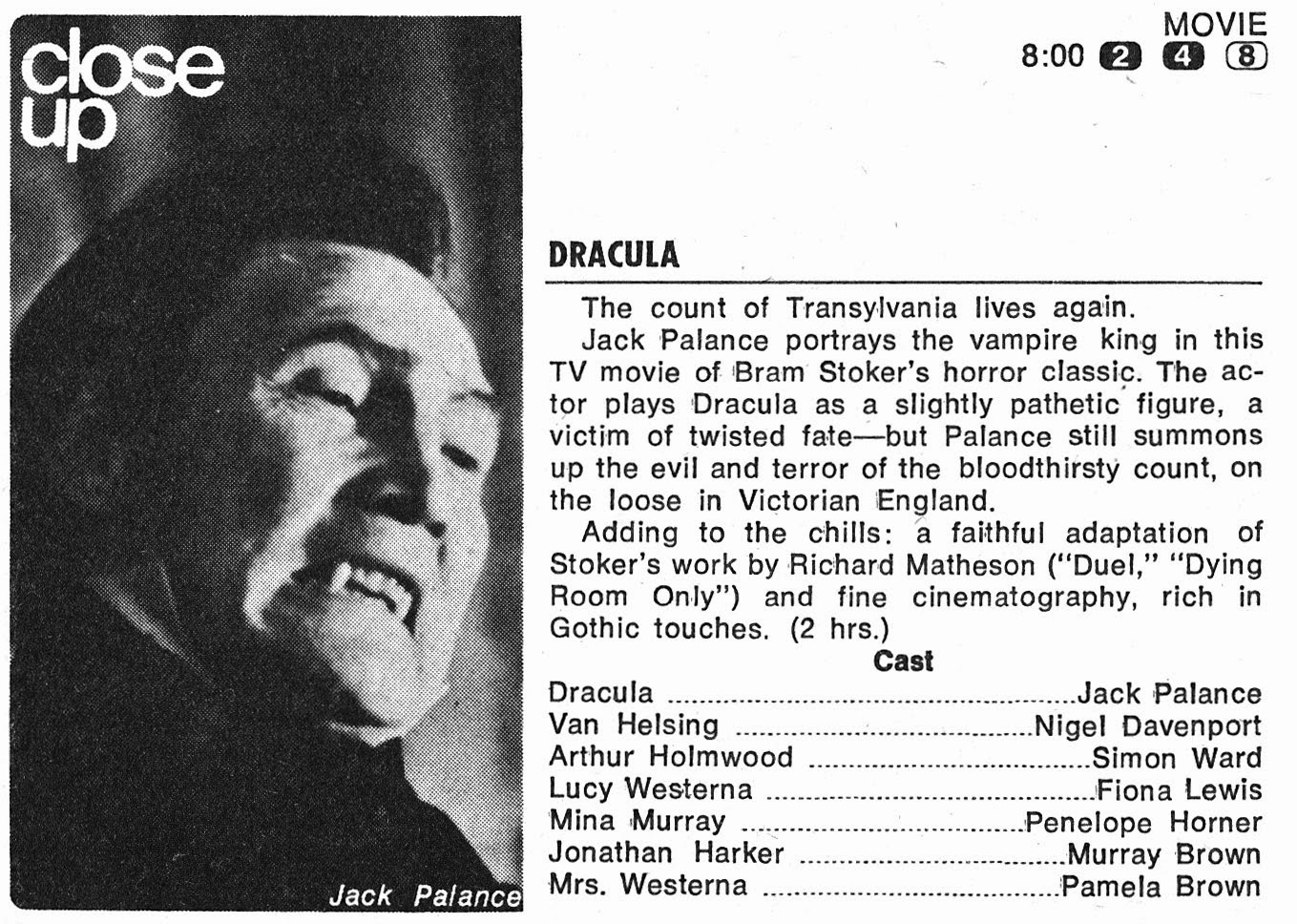It's difficult to overstate the success of
THE NIGHT STALKER, which aired on this date in 1972. The movie reached a whopping 54 percent of all TV viewers upon its debut, which is stunning even
without it's "horror movie" stigma. While star Darren McGavin did OK for himself, returning to battle the supernatural in the KOLCHAK sequel and weekly series, the film's iconic badguy was one-and-done. Played by Barry Atwater, vampire
Janos Skorzeny was equal parts Jonathan Frid and Christopher Lee, a monster as savage as he was pathetic. Shortly before the official demise of THE NIGHT STALKER weekly series in 1975, the gang at
CASTLE OF FRANKENSTEIN magazine tracked down Atwater to chat about his role in the original movie. Below is a transcript of the feature as it appeared in issue 25 on the magazine. I've preserved the magazine's unusual style choices and fixed a few typos.
(Note: A not-that-great comic published by Moonstone in 2009 attempted to create a direct connection between Barnabas Collins and Janos Skorzeny. You can get a taste of it
HERE.)
THE NIGHT STALKER IS ALIVE
AND LIVING IN SOUTHERN CALIFORNIA
An Interview with the star of the original NIGHT STALKER, Barry Atwater
As a Veteran actor who had already racked up a considerable record in numerous films and TV dramas, Barry Atwater suddenly achieved overnight fame as The Vampire Who Threatened to Destroy Las Vegas in the first and original THE NIGHT STALKER. In this special COF Interview, created by Richard E. Werft, Jr., Barry Atwater ventures deep behind-the-scenes concerning the creation of STALKER — but, more importantly, he also reveals himself as a very articulate and highly aware individual with a very sensitive and sensible insight about filmmaking, acting as a career and about the world around him.
COF: Do you remember the first big break that brought you into films?
BA: Yes — I worked in a student film at UCLA. The film got an Academy Award and the right notoriety; the aura around the Award was enough to me an agent and some parts. I couldn't act my way out of a paper bag at the time, but it didn't matter.
COF: Did they approach you for THE NIGHT STALKER with you specifically in mind?
BA: I'm not sure how that came about. Someone may have suggested me to Dan ("Dark Shadows") Curtis. I think he looked up my picture in the Academy directory. He was interested and called up my agent. I went to the studio. I brought some pictures with me and he looked at one shot I brought and he said, "That's it! That's the one!"
COF: How did you feel about doing NIGHT STALKER ? Was it hard for you to enter into the mood of playing a fiend, a vampire?
BA: No, not at all. We all have all sorts of feelings inside us; everybody. All we have to do is simply let go and the feeling comes out. That's what acting's about — just letting go, not suppressing or repressing or criticizing or censoring ourselves.
COF: How did you go about preparing for your role as Janos Skorzeny the vampire? Didyou stand in front of the mirror and decide on which facial expressions would be suitable?
BA: No, I cannot control that. I just let that happen.
COF: How did you feel about interpreting, about getting into the character?
BA: I felt he was very lonely. He has no friends. He's all alone, so he doesn't talk to people. I'm sure he's not a happy man, but he's stuck. He's like a heroin addict; he's stuck. And I took that attitude. I've never taken heroin and never intend to, but what I heard about it is that a guy has to have it. If Skorzeny didn't have blood, what would happen to him? it must be really hell not to have blood. So, I simply took the absolute necessity to have blood, and if I have to kill people, I'm "sorry." I don't want to kill anyone. I don't get kicks by killing people. I simply have to have it. And if people don't understand it, it's not my fault — and they chase me and they do awful to me and they shoot bullets at me and I'm furious with them.
COF: Do you regret not having any speaking lines?
BA: No, I was very glad — very, very glad there were no speaking lines. Because I think as soon as the vampire opens his mouth and starts to talk, he becomes an ordinary human being; an actor saying silly lines. And I think that was a brilliant idea of theirs not to have the vampire say a word.
COF: Was all of the hissing and growling overdubbed.
B A: No, this is what happened: Sometimes when they shoot they use an
Arriflex camera which makes a lot of noise. It's a hand-held camera. In the end, where the sunlight comes in and I try to go up the stairs and the sunlight hits me and finally I fall, and Kolchak kills me with a stake — all that was shot with an Arriflex which made a terrible racket. So, all the noises had to be dubbed. We went into an adjacent sound stage and I tried to go through the business to make it as consistent as possible with the hissing and the growling and the snarling to cover that sequence where they were using the noisy Arriflex camera.
COF: You were the co-star of the most successful made-for-TV movie. To what do you attribute your personal effectiveness in THE NIGHT STALKER?
BA: That's due to the way it was photographed and the way it was cut. I'm not trying to give false modesty. I think if you like films it’s important for you to know what it is in the film that makes you like it, so you can appreciate it all the more. There are a lot of things to watch in the film aside from the actors. You watch the way the shot's done — how it's cut, the camera angle. Those are the things in a film that can really be exciting as film. The way it was cut and edited together. In THE NIGHT STALKER you would be watching scene A and hearing the dialogue and sound from scene A. As you got to the end of that, we would suddenly hear the sound from scene B — then the visual would switch to scene B. This kind of overlapping — it would pull us through, rather than jerk, jerk, jerk like that. It would kind of ease us through into the next sequence and make the pacing very much faster. It's a neat technique and it's exciting to watch. It feels good to watch.
COF: Could you describe the general make-up they used on you?
BA: The eyebrows — little bitty scissors were used to cut out all the hair underneath here and then a lot of goop was put on them and they were brought out and turned up on the ends. Full, complete contact lenses were used for the bloodshot part. There's a "mildly" bloodshot and a "heavily" blood- shot set, so there were two sets of contact lenses, and then the fangs and then a wig with black hair.
COF: How was that sequence filmed where you ran that man out the window on an upper floor?
BA: That was shot in the administration building of the Sam Goldwyn Studios and they replaced the window and used sugar for glass. They can make a pane out of sugar. It breaks, but it doesn't have very sharp, needle- like fractures. And they erected on the ground below a great big air pillow. It must have been maybe six feet high. It was inflated with blowers. And then the stuntman inside took a running jump, dived through the window and turned and tumbled and twisted as he fell three stories onto the cushion below. The window you saw from the inside of the building was on a set. The outside was another building altogether.
COF: Do you think it made a statement about society when the police forced Kolchak to get out of town?
BA: Sure it did, and it's a statement that I think most of us believe as being certainly possible. It's a weird thing. I just read a book called "
Centennial" about the year 1874 and about the big centennial exposition in Philadelphia. And it was the second term of Ulysses S. Grant, who was a very inept man — had no business ever being president. And the corruption was so thick throughout the whole government that it made me think, "Well... Watergate's really nothing new. Why should we be so really uptight about it? It's been going on for at least a hundred years, or probably before that." But we want to believe the best of ourselves and the best of our country—about George Washington and the cherry tree and all that sort of stuff. So, when it does happen we're always sort of shocked and horrified. And yet. in THE NIGHT STALKER, with that undercurrent of corruption, it really didn't surprise us a heck of a lot.
COF: I know THE NIGHT STALKER was a very serious drama, but between takes did you like to break the tension with some humor?
BA: No, not especially. I don't horse around on the set. If it's a comedy picture I will, because it keeps up the fun ambiance. But if it's a serious film and I start to horse around or someone else starts to horse around, then this is bad, because it breaks the mood. You really have to keep that going, because it's very tenuous and it can slip away if you're not careful. You have to really concentrate; before you go into the set to take your place, you walk from the dressing room to the set. And I have to say to myself, where am I, what am I doing — because I've gotten out of it. So I have to walk back into it. What do I need, what do I want, what values do I have, what do I care about, what do I dislike, what do I admire, hate, respect, and so on. The whole inside has to go.
COF: If they re-made DRACULA and did it according to the book, do you have any ambition to portray the famous Count, the classic Vampire?
BA: No way, no way. Look, DRACULA was written in 1898. That style of presentation of a story is old hat for us now. We really know it's a classic when we see it. In the
recent version with Palance, we've had it—we've really had it. So, we cannot go and keep doing that over and over and over again. Here's what happened: take THE EXORCIST — you see, that is where we are now — where DRACULA was when it came out with Lugosi in the early 30's. It scared the heck out of us, and so did the first FRANKENSTEIN. Now, today in 1974, it's THE EXORCIST that's scaring people and making them sick. We cannot go back from the level of THE EXORCIST in terms of story, of treatment, of realism and honesty and candor. We're doing things, saying things and we're admitting things that we never did before. We are far more honest and candid a people than we ever were. I remember when sex movies started showing in theatres I couldn't believe it, because I was brought up in Denver, Colorado in a very square, Republican, Protestant society. And all this stuff Was where you wouldn't even think about it, much less talk about it. But we knew about it. Now we're all saying out loud what we're thinking in our heads. And I think this is marvelous. I think we're being honest and I think when we're honest we'll be healthy. When we start lying, then we get sick.
COF: What advice would you give to someone who wants to become an actor, and would you recommend the profession?
BA : No. If you want to become an actor, nothing in God's will can keep you from becoming an actor. Nobody can recommend that you be or not be. If you want to be, you will be. You cannot help yourself. You will be, because you must be. You must be... or die. It occurred to me not long ago that acting is really an athletic activity and it wouldn't be far out to have acting as part of the Olympics because an actor really uses his body. You have to move. You have to feel. And I think one of the reasons athletes can make very good actors is because they already know how to move. They already know how to respond physically. If you can't do it physically you do it with words, but the words stand for a physical action. If I say, "Come here," what I'm really wanting to do is reach out and grab you and pull you here. So, I've simply used the words in place of an action; but I mean that action inside me when I say the words, and that's what turns it on — the meaning, the intention. I mean it... all of me means it.
COF: Do you ever feel the urge to write, direct and produce a film on your own?
BA: Yes, I would like to do that. That's a very exciting medium. It's the most exciting for me.
Kenneth Clark said in his CIVILIZATION that he felt that the most culturally representative aspect of this century would be the motion picture rather than architecture.
COF: Do you ever think of the degree of immortality you achieve by having yourself recorded on film?
BA: What good does it do? When I'm dead, I'm dead.
THE NIGHT STALKER made the above statement in Los Angeles, a little over two years after the first unofficial documentary report of his death was made public. So, Kolchak... beware!
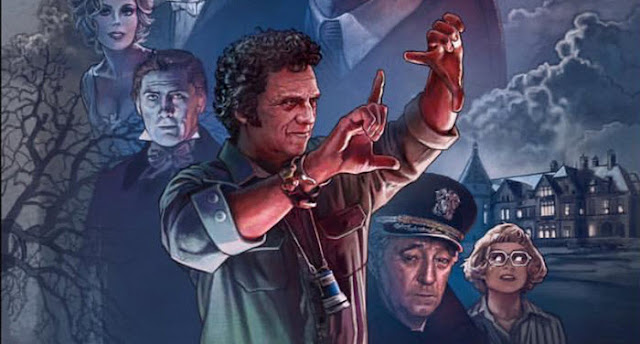
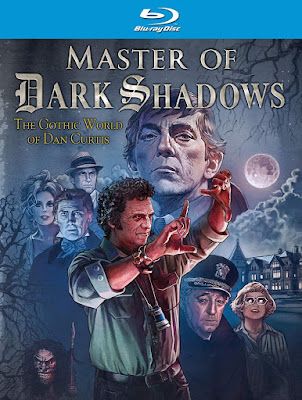 The Dan Curtis documentary Master of Dark Shadows was released on DVD and Blu-ray earlier this week. Even though I've spent the last few months promoting the release, there's been no review of the film here at the CHS. Why? MPI Home Video didn't offer me a screener. But that's OK ... the folks at That's My Entertainment still love me and sent an advance copy, so they got my review.
The Dan Curtis documentary Master of Dark Shadows was released on DVD and Blu-ray earlier this week. Even though I've spent the last few months promoting the release, there's been no review of the film here at the CHS. Why? MPI Home Video didn't offer me a screener. But that's OK ... the folks at That's My Entertainment still love me and sent an advance copy, so they got my review.
